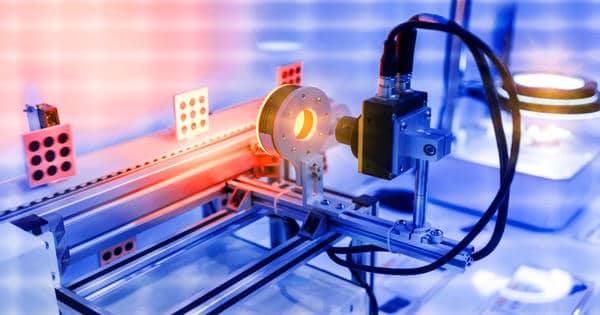A research team investigating the properties of a semiconductor mixed with a revolutionary thin oxide sheet discovered a startling new source of conductivity in the form of trapped oxygen atoms.
At the American Physical Society’s Spring 2022 meeting, Scott Chambers, a materials scientist at the Department of Energy’s Pacific Northwest National Laboratory, revealed the team’s discovery. The findings of the study are detailed in the journal Physical Review Materials.
The discovery has far-reaching ramifications for how thin oxide coatings will be used in future semiconductor design and manufacturing. Specifically, depending on the electronic impurity supplied during crystal development, semiconductors utilized in modern electronics are classified as n-type or p-type.
Both n- and p-type silicon-based materials are used in modern electrical devices. Other types of semiconductors, on the other hand, continue to pique interest. Chambers and his colleagues were experimenting with germanium and a thin crystalline coating of lanthanum-strontium-zirconium-titanium-oxide (LSZTO).
“We are reporting on a powerful tool for probing semiconductor structure and function,” said Chambers.
“Hard X-ray photoelectron spectroscopy revealed in this case that atoms of oxygen, an impurity in the germanium, dominate the properties of the material system when germanium is joined to a particular oxide material. This was a big surprise.”
The study team discovered they could learn a lot more about the electronic properties of the germanium/LSZTO combination using the Diamond Light Source on the Harwell Science and Innovation Campus in Oxfordshire, England, than they could using traditional approaches.
The oxygen atoms near the interface donate electrons to the LSZTO film, creating holes, or the absence of electrons, in the germanium within a few atomic layers of the interface. These specialized holes resulted in behavior that totally eclipsed the semiconducting properties of both n- and p-type germanium in the different samples we prepared. This, too, was a big surprise.
Scott Chambers
“When we tried to probe the material with conventional techniques, the much higher conductivity of germanium essentially caused a short circuit,” Chambers said. “As a result, we could learn something about the electronic properties of the Ge, which we already know a lot about, but nothing about the properties of the LSZTO film or the interface between the LSZTO film and the germanium which we suspected might be very interesting and possibly useful for technology.”
A new role for hard X-rays
The Diamond Light Source’s so-called “hard” X-rays could pierce the material and reveal information about what was going on at the atomic level.
“Our results were best interpreted in terms of oxygen impurities in the germanium being responsible for a very interesting effect,” Chambers said.
“The oxygen atoms near the interface donate electrons to the LSZTO film, creating holes, or the absence of electrons, in the germanium within a few atomic layers of the interface. These specialized holes resulted in behavior that totally eclipsed the semiconducting properties of both n- and p-type germanium in the different samples we prepared. This, too, was a big surprise.”
Interesting semiconducting properties frequently occur at the interface between the thin-film oxide and the base semiconductor. According to Chambers, the goal is to learn how to adjust the electric field at the surface to regulate the interesting and potentially beneficial electric fields that form at these interfaces.
This idea is being investigated at PNNL through ongoing tests. While the samples utilized in this study are unlikely to be commercially viable in the near future, Chambers believes the procedures and scientific findings achieved will pay off in the long run.
Materials scientists and physicists will be able to better grasp how to create new semiconductor material systems with desirable features thanks to the new scientific understanding. Bethany Matthews, Steven Spurgeon, Mark Bowden, Zihua Zhu, and Peter Sushko, all of PNNL, contributed to the study.
The Office of Science at the Department of Energy funded the research. The Environmental Molecular Sciences Laboratory, a Department of Energy Office of Science user facility at PNNL, was used for several of the experiments and sample preparation.
In the PNNL Radiochemical Processing Laboratory, electron microscopy was used. Tien-Lin Lee and Judith Gabel, two collaborators, conducted studies at the Diamond Light Source. Matt Chrysler and Joe Ngai of the University of Texas at Arlington, who prepared the samples, were also collaborators.















